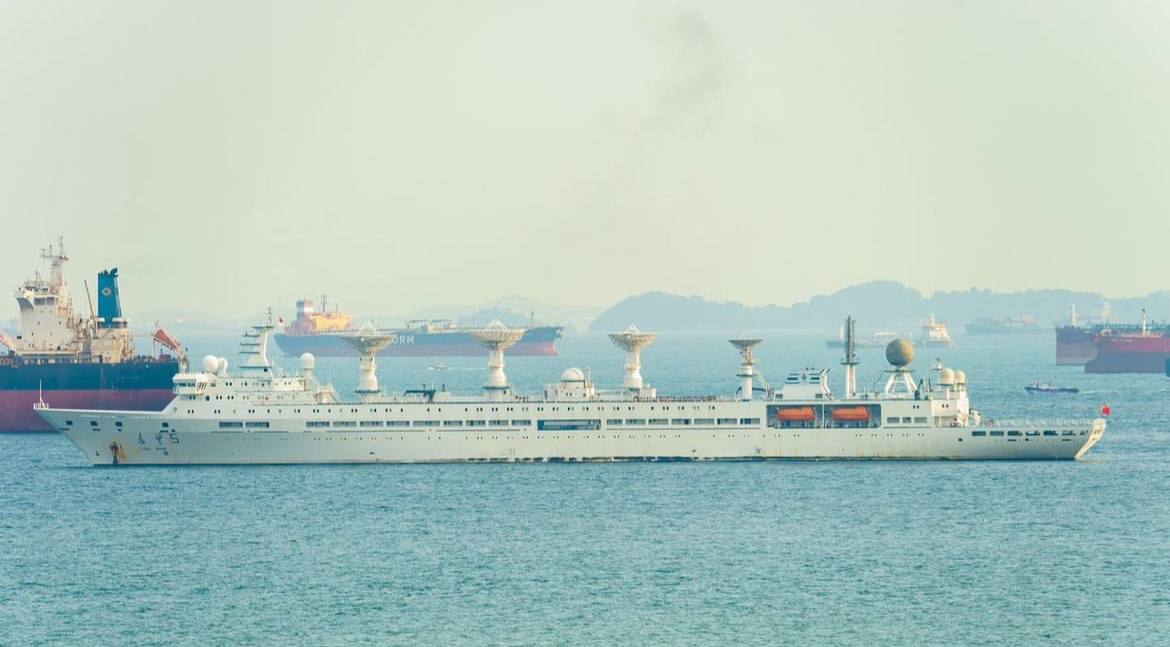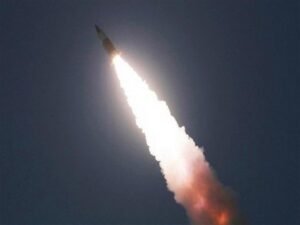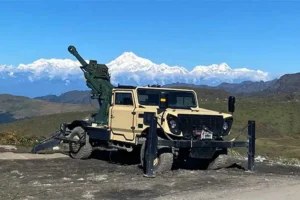A Chinese research vessel called ‘Shi Yan-6,’ which entered the Indian Ocean Region (IOR) in September and was seen as a massive threat to security by India, has finally concluded its “scientific expedition” and returned to its base in its home country.
China’s most recent scientific mission in the eastern Indian Ocean ended on December 1, as the geophysical scientific research vessel Shi Yan-6 made its way back to a port in Guangzhou City, in the Guangdong Province of south China, CGTN reported.
The ship, which carried 37 scientists from 13 organizations with 28 research projects, commenced the expeditionary journey on September 10. It was organized by the South China Sea Institute of Oceanology under the Chinese Academy of Sciences. Approximately 25,300 kilometers were traversed throughout the 83-day excursion, which ended recently.

While Chinese research vessels in the region are generally seen with suspicion by its rival India, this particular ship ignited a whole new controversy. When the ship was first detected, it was headed towards Sri Lanka, with reports indicating that it would be allowed to dock in October.
However, a Sri Lankan Foreign Minister clarified that his country had not permitted the ship to dock in Sri Lanka. Nonetheless, the Ranil Wickremesinghe government continued to send mixed signals over permission for the Chinese research vessel to dock at Colombo. The United States also joined India in opposing the docking of the Chinese boat at the Sri Lankan port.
China concluded its latest scientific expedition in the eastern Indian Ocean while its geophysical scientific research vessel Shiyan-6 returned to a port in Guangzhou, S China’s Guangdong, on Fri.
The 83-day expedition covered a total range of about 25,300 km. pic.twitter.com/X03gHXBIkW— China Focus (@China__Focus) December 4, 2023
The authorities in Colombo eventually caved in, and the ship was allowed to berth despite Indian and US reservations. “Clearance was granted to carry out marine scientific research on October 30 and 31,” a spokesperson for the Colombo Foreign Ministry said. The officials also informed that the vessel had sought permission to conduct a joint survey of Sri Lanka’s maritime borders, which was granted.
This was seen as Sri Lanka’s growing ties with China as it chose to proceed with the approval. This is in stark contrast to a similar incident last year when Sri Lanka prohibited a Chinese vessel from undertaking any research water in its waters after it was accused of tracking a spacecraft and posing an overt threat to Sri Lankan security.
Shin Yan 6: Sri Lanka allows 48-hour research window to Chinese vessel amid spying concerns https://t.co/D7w4CxRcq3
— WION (@WIONews) October 29, 2023
The latest media reports stated that the scientists performed various interdisciplinary duties while on the voyage, such as collecting and analyzing underwater seismic data, biochemistry, hydrometeorological observation, and containing marine silt. They collected data and samples from on-site observations, including 154 batches of seawater samples.
The Chinese state media report said the exploration aimed to understand paleoclimate changes and how dynamic processes affect the region’s biogeochemical cycles, ecosystems, and sedimentary processes. It also sought to clarify the geographical pattern of biodiversity in the area and reveal biological communities’ response and indicative role to physical processes.
However, the critiques of China have frequently alleged that Chinese research vessels are used to gather intelligence for use by the People’s Liberation Army. Since 2019, up to 48 Chinese scientific research vessels have been stationed in the Indian Ocean Region (IOR), primarily in the Arabian Sea and stretching southward into the Persian Gulf and the Bay of Bengal.
The deployment of a Chinese research vessel Yuan Wang 5, in the region last year also triggered a controversy that remains fresh in India’s memory.
Chinese Vessels In IOR Amid Concerns From India
In November last year, Chinese research vessel Yuan Wang-6 entered the international waters of IOR. Although all vessels are allowed to sail through these waters, the timing of this particular vessel coincided with a planned missile launch test of Agni-class nuclear ballistic missile by India. The test was, thus, postponed for security reasons.
In a similar incident in December that same year, Chinese vessel ‘Yuan Wang 5’ entered the Indian Ocean in what coincided with a planned Indian long-range missile test between December 15-16.
Yuan Wang 5 is known to be a PLA ballistic missile, satellite tracking, and seabed mapping ship, arrived in the Indian Ocean Region on December 5 and left on December 12, presumably on a mission to monitor Chinese space activity, via Sahul Banks, northwest of Australia.

The PLA Navy is believed to be mapping the Sunda and Lombok Straits in preparation for future submarine operations in the Indian Ocean, as evidenced by the strategic tracking ship Yuan Wang 5, which is en route to Sanya Port on Hainan Island, home to China’s ballistic missile nuclear submarine base.
Earlier this year, Indian Navy Chief Admiral R. Hari Kumar noted that Chinese research vessels are free to operate in international waters and can track and gather electronic signals. However, he stated that it becomes problematic when these vessels act close to areas of national interest for India.
The catch is that Chinese vessels are dual-use ships identified as surveillance vessels by their adversaries. According to a 2018 report authored by Ryan D. Martinson and Peter A. Dutton of the US Naval War College, since 2012, the majority of Chinese research boats that have been put into service have been multipurpose research platforms that can carry out various research tasks.
However, analysts from across the board concur that research ships that are ostensibly engaged in scientific studies may also use their equipment for naval surveillance, obtaining information about foreign military installations and vessels.
China has termed its endeavors in the Indian Ocean as benign, a claim which has been less than convincing for India. Military analysts believe that the capabilities that the Chinese Navy is pursuing in the region would help it undertake a military mission there.








